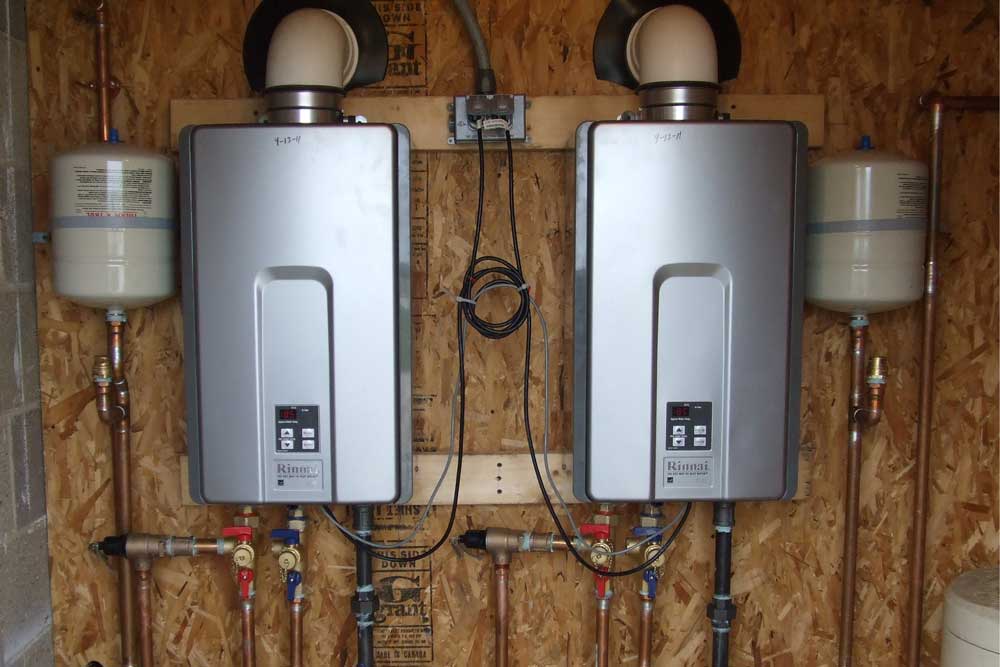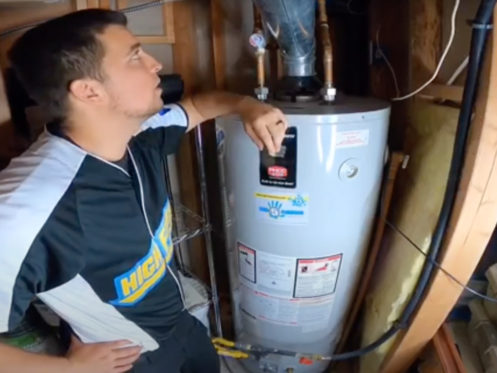What're your insights and beliefs on What Kind of Maintenance Do Water Heaters Need??

Warm water is crucial for daily comfort, whether it's for a refreshing shower or washing recipes. To ensure your hot water system runs effectively and lasts longer, regular upkeep is key. This post provides sensible ideas and understandings on exactly how to maintain your home's hot water system to prevent disturbances and expensive repair services.
Intro
Maintaining your home's hot water system might appear daunting, yet with a few simple actions, you can ensure it operates efficiently for years to come. This overview covers whatever from comprehending your hot water system to do it yourself maintenance pointers and recognizing when to contact professional aid.
Relevance of Maintaining Your Hot Water System
Routine maintenance not only extends the lifespan of your warm water system yet also guarantees it operates effectively. Disregarding upkeep can result in reduced effectiveness, greater power expenses, and also early failing of the system.
Signs Your Hot Water System Needs Maintenance
Knowing when your hot water system needs interest can stop significant concerns. Keep an eye out for indicators such as irregular water temperature level, weird noises from the heater, or rusty water.
Flushing the Hot Water Heater
Purging your hot water heater gets rid of debris buildup, boosting performance and lengthening its life.
Monitoring and Changing Anode Rods
Anode rods avoid rust inside the storage tank. Inspecting and changing them when broken is crucial.
Facility Concerns Needing Expert Aid
Instances include significant leakages, electric issues, or if your water heater is consistently underperforming.
Routine Specialist Maintenance Conveniences
Professional maintenance can include detailed evaluations, tune-ups, and guaranteeing compliance with security standards.
Inspecting and Readjusting Temperature Setups
Adjusting the temperature level setups guarantees optimal efficiency and security.
Do It Yourself Tips for Maintenance
You can execute a number of maintenance jobs yourself to maintain your warm water system in leading condition.
Looking for Leaks
Regularly evaluate pipes and links for leaks, as these can lead to water damages and greater expenses.
Understanding Your Warm Water System
Before diving right into maintenance tasks, it's handy to comprehend the basic elements of your hot water system. Normally, this includes the hot water heater itself, pipes, anode poles, and temperature controls.
Month-to-month Maintenance Tasks
Normal monthly checks can assist catch small issues prior to they rise.
Evaluating Stress Relief Valves
Checking the pressure safety valve ensures it works correctly and stops too much pressure accumulation.
Insulating Pipelines
Insulating hot water pipelines reduces warm loss and can conserve energy.
When to Call an Expert
While DIY maintenance is valuable, some issues need specialist knowledge.
Verdict
Regular upkeep of your home's warm water system is essential for effectiveness, long life, and price savings. By complying with these ideas and knowing when to look for professional assistance, you can make sure a reliable supply of hot water without unforeseen interruptions.
Water Heater Maintenance Tips
Test the TPR Valve
Shut off the power and the cold-water supply valve. Place a bucket under the pipe connected to the temperature-pressure-release (TPR) valve on the top or side of the tank. (This valve opens if the tank pressure gets too high.) Lift the valve’s tab to let some water out, then let go. If water keeps flowing, drain the tank partway, unscrew the old valve with a pipe wrench, and install a new one. Check the Anode Rod
Put a hose to the tank’s drain cock and let out a few gallons of water. Now fit a 1 1/16-inch socket onto the rod’s hex head on top of the heater (or under its top plate) and unscrew the rod. If it’s less than ½ inch thick or coated with calcium, buy a new one, wrap its threads with Teflon tape, put it back in the tank, and tighten securely. Use this segmented rod if headroom above the tank is limited. Drain the Tank and Wash Out Sediment
Drain the remaining water in the tank into the bucket, then stir up the sediment on the tank’s bottom by briefly opening the cold-water supply valve. Drain and repeat until clean water comes out of the hose. Close the drain cock, refill the tank, and turn its power back on. Adjust the Temperature
Find the temperature dial on the side of the tank and unscrew its cover. Adjust the dial to 120 degrees using a flathead screwdriver. For every 10 degrees the temperature is lowered, you can expect to save up to 5 percent in energy costs. Turn the water heater off or the thermostat down to its lowest setting if you plan to be away from home for more than three days. Insulate the Pipes
Buy some self-sticking 3/8-inch-thick foam pipe insulation that matches the pipes’ diameter. Slide the foam over the hot-and cold-water pipes as far as you can reach. Insulating the cold-water pipe prevents condensation in summer. Peel the tape and squeeze the insulation closed. If the pipe is 6 inches or less from the flue, cover it with 1-inch-thick unfaced fiberglass pipe wrap. https://www.thisoldhouse.com/plumbing/21016402/how-to-maintain-a-water-heater

I came across that blog post about Tips on Maintaining a Water Heater while doing research the web. Remember to pause to share this blog post if you enjoyed reading it. We enjoy reading our article about How to Maintain Your Water Heater & Prolong its Life.
Instant Quote